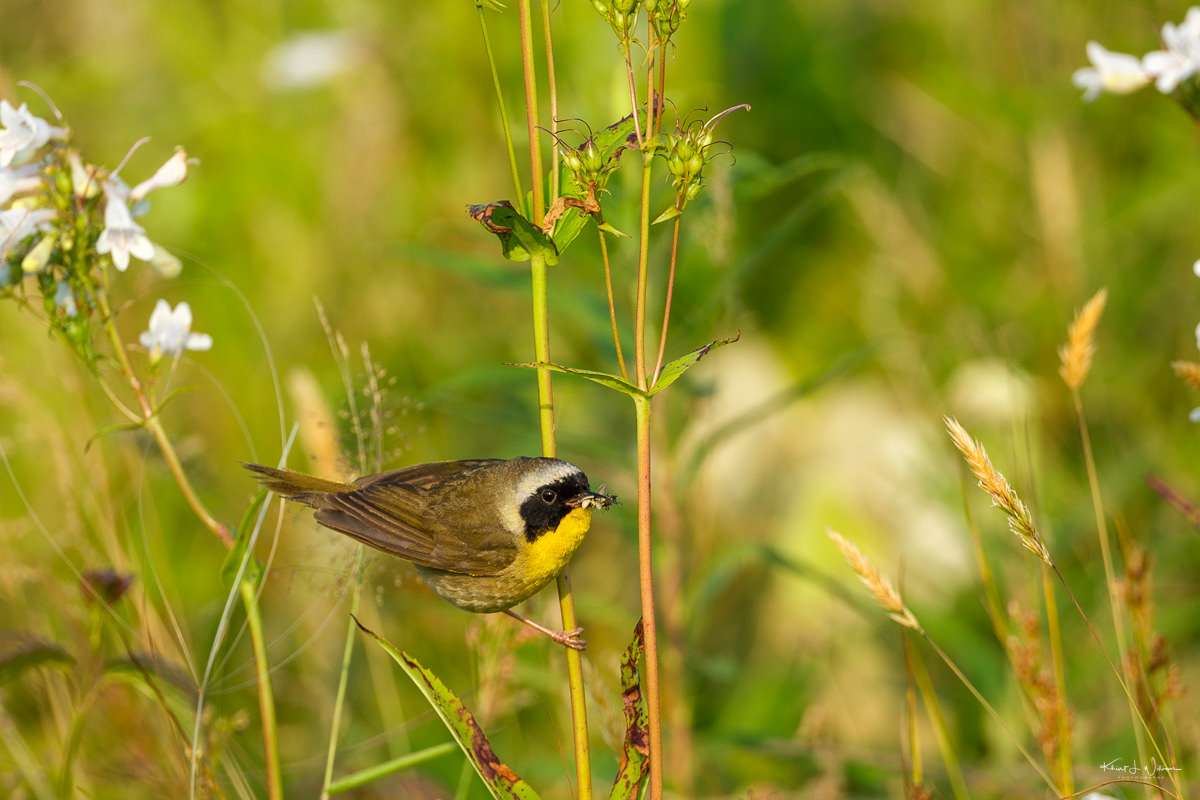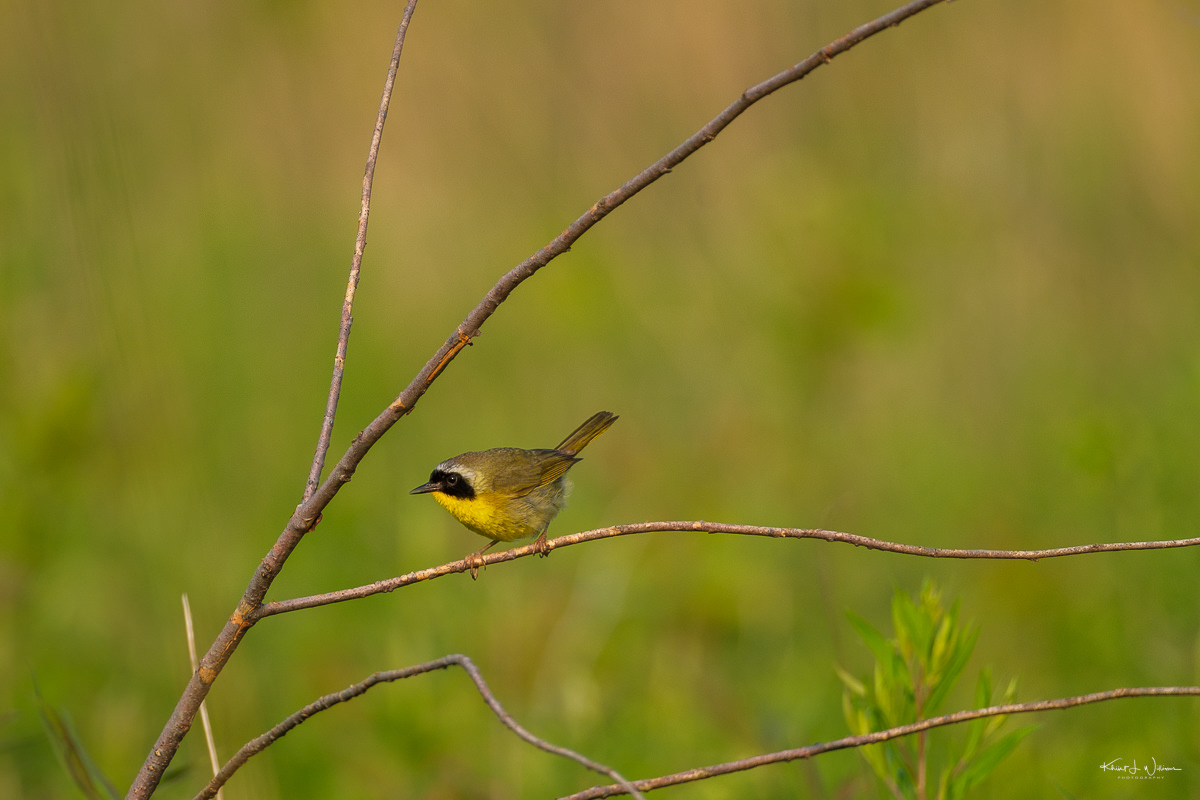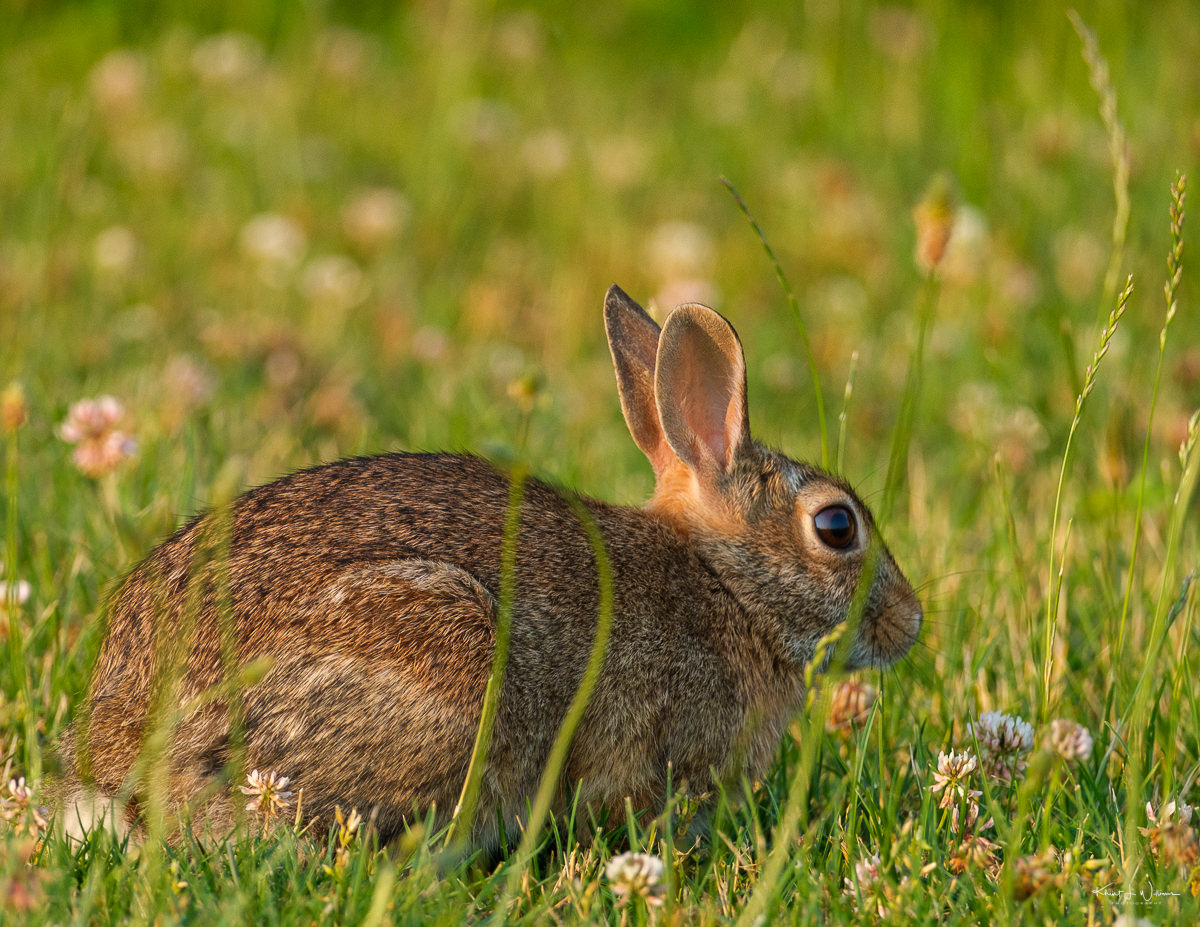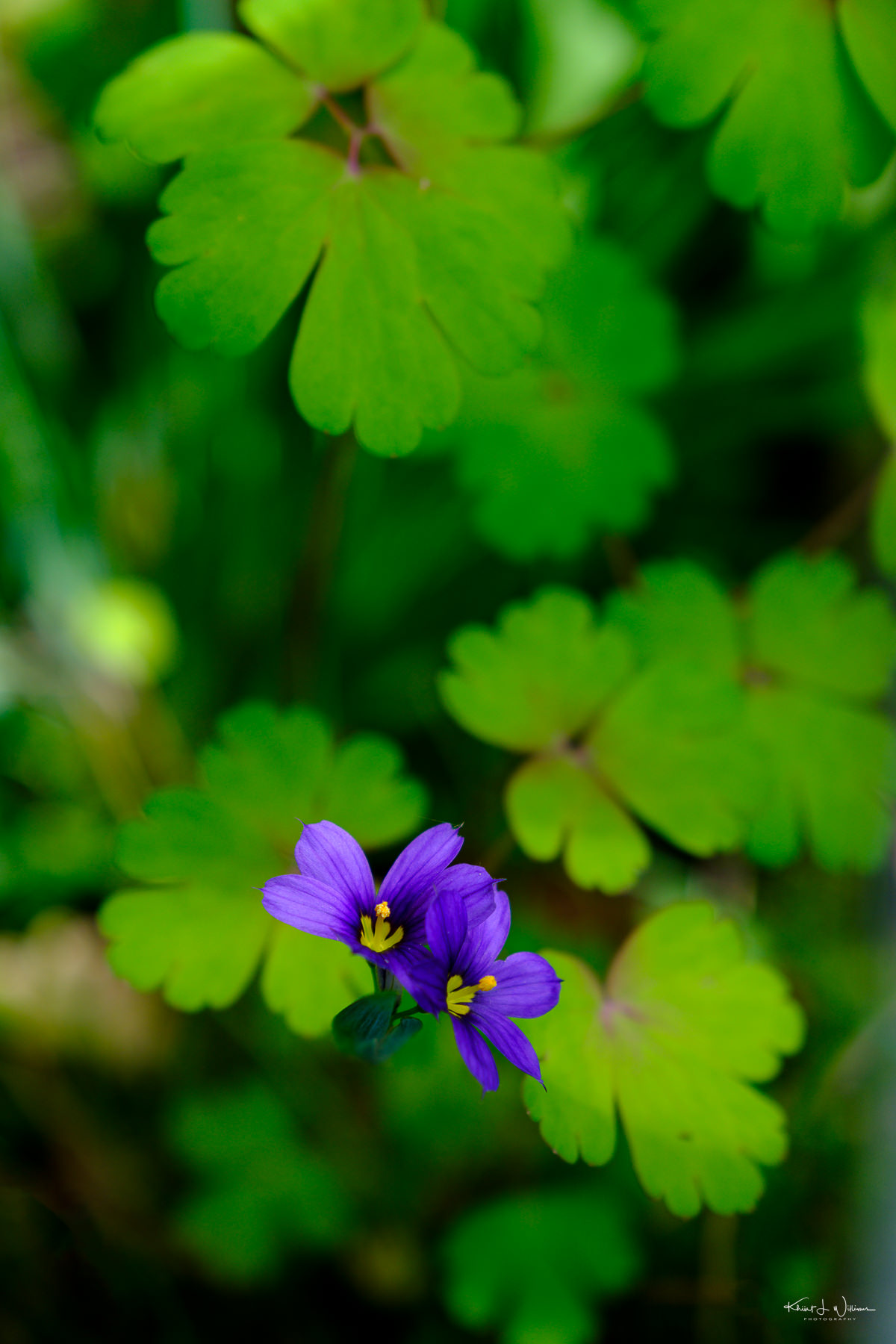After a brief distraction watching a rabbit enjoy breakfast, I continued my search for birds. Earlier, two photographers with impressive zoom lenses on their cameras had passed by, clearly interested in capturing avian moments. I walked past them and found a spot about ten meters ahead to focus on my own bird photography.
I attempted to capture images of birds coming and going from their nests in the meadow, but unfortunately, I didn't have much luck. As I was trying, the two photographers caught up with me, and we struck up a friendly conversation. The elder photographer seemed quite familiar with the park and shared some helpful tips on where I might have better chances of spotting birds in the meadow. The other photographer appeared to be around my age and was relatively new to bird photography.
While we were talking, I heard a chittering sound coming from a nearby thicket, and I immediately got my camera ready. This wasn't the first time I had photographed the Common Yellowthroat Warbler, but it was my first time doing so at Mercer Meadows. The male warbler was busy hunting for insects in the thicket, and I was fortunate to capture a shot of him holding his prey in his beak.

The Common Yellowthroat Warbler stands out due to its unconventional nesting habit. Unlike other warblers, it chooses to nest in open marshes, making it a common sight in reed beds and areas with cattails throughout the country. The male of this species can often be seen perched on tall stalks, delivering its unique song, characterised by the rhythmic repetition of "Wichita-Wichita-Wichita."



